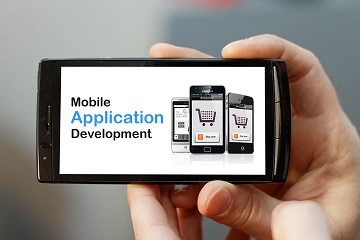
Choosing a Solid Backend for Ecommerce Mobile Application
Choosing a solid backend for Ecommerce mobile application is crucial for ensuring a seamless user experience and robust functionality. The backend serves as the foundation of your mobile app, handling data management, security, and integration with other systems. In this blog post, we will explore key considerations for selecting the right backend for your Ecommerce mobile application.
Why a Solid Backend Matters
A solid backend is essential for the performance and reliability of your Ecommerce mobile application. It supports various critical functions, including data storage, user authentication, and real-time updates. Without a reliable backend, your app may face performance issues, security vulnerabilities, or scalability challenges.
1. Evaluate Your Business Needs
Before choosing a backend, evaluate your specific business needs. Determine the size of your expected user base and the complexity of your application. For example, if you anticipate high traffic and complex transactions, you’ll need a robust backend. Conversely, a smaller app with simpler functions might require a less complex solution.
2. Consider Scalability
Scalability is a vital factor when choosing a backend for your Ecommerce mobile application. Your backend should be able to handle increased loads as your business grows. Opt for a solution that offers horizontal scaling, allowing you to add more servers or resources easily. This ensures that your app remains responsive and reliable as your user base expands.
3. Assess Security Features
Security is paramount for any Ecommerce application. Ensure that your chosen backend provides robust security features. Look for options that support encryption, secure authentication, and regular security updates. Additionally, consider a backend that offers built-in protection against common threats such as SQL injection and cross-site scripting (XSS).
4. Evaluate Integration Capabilities
Your backend should seamlessly integrate with other systems and services. This includes payment gateways, CRM systems, and marketing tools. Integration capabilities can streamline processes and enhance the functionality of your app. For instance, integrating with a payment gateway allows for smooth transactions, while CRM integration helps manage customer relationships effectively.
5. Look for Real-Time Data Processing
Real-time data processing can significantly enhance the user experience of your Ecommerce mobile application. Choose a backend that supports real-time updates, such as live order tracking and instant notifications. This feature keeps users informed and engaged, leading to higher satisfaction and retention rates.
6. Opt for a Flexible Architecture
A flexible backend architecture allows for easier updates and modifications. Consider a backend that supports microservices or serverless architectures. These options provide modularity, making it easier to update individual components without affecting the entire system. Flexibility also aids in adapting to new technologies and requirements.
7. Analyze Performance and Reliability
Performance and reliability are crucial aspects of backend selection. Your backend should offer high availability and minimal downtime. Look for providers with a track record of reliable performance and strong customer support. Performance metrics such as response time and throughput are also important indicators of backend quality.
8. Consider Cost and Budget
Budget considerations play a significant role in backend selection. Evaluate the cost of various backend solutions and compare them against your budget. Keep in mind that cheaper options may come with limitations in features or scalability. Conversely, more expensive solutions may offer advanced features and better performance.
9. Check for Developer Support
Developer support and documentation are essential for implementing and maintaining your backend. Choose a backend solution that offers comprehensive documentation, tutorials, and a supportive community. Access to developer resources can simplify the development process and help resolve issues quickly.
10. Test and Validate
Before finalizing your choice, test and validate the backend options. Perform trial runs to evaluate their performance, security, and integration capabilities. Gather feedback from your development team and users to ensure the backend meets your requirements. This step is crucial for avoiding potential issues and ensuring a smooth launch.
Conclusion
Choosing a solid backend for your Ecommerce mobile application is critical for success. By evaluating your business needs, considering scalability, and assessing security features, you can make an informed decision. Integration capabilities, real-time data processing, and flexible architecture also play important roles. Additionally, analyzing performance, budget, and developer support ensures you select the best backend for your needs.
In summary, a well-chosen backend provides a strong foundation for your Ecommerce mobile application. It supports essential functions, enhances user experience, and scales with your business growth. Invest time and effort in selecting the right backend, and your mobile app will be better positioned for success.
Technology Options for Developing Hybrid Mobile Application for Ecommerce
